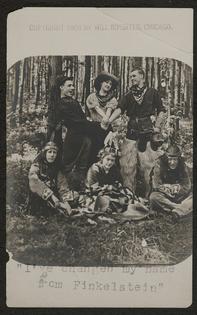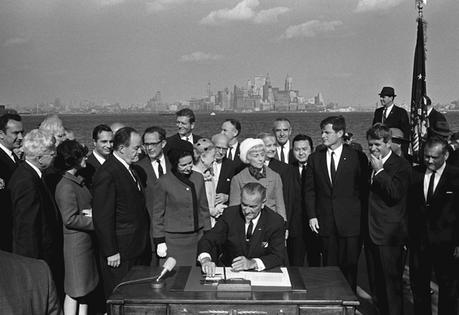Jewish Americans changed their names, but not at Ellis Island
Published in News & Features
A well-worn joke in American Jewish culture goes like this. A Jewish immigrant landed at Ellis Island in New York. The procedures were confusing, and he was overwhelmed by the commotion. When one of the officials asked him “What is your name?” he replied, “Shayn fergessen,” which in Yiddish means “I’ve already forgotten.” The official then recorded his name as Sean Ferguson.
Today, members of many white ethnic groups – including Jews, Italians and Poles – believe that insensitive or ignorant Ellis Island officials changed their families’ names when they arrived in the U.S. to make them sound more American.
But there is actually much more evidence demonstrating that Jews and members of other white ethnic groups changed names on their own. In the research for my book, I looked at legal name change petitions in New York City throughout the 20th century showing that thousands of Jewish immigrants and their children indeed changed their own names.
As American Jews celebrate Jewish American Heritage Month in May, it is worth revisiting where and why the portrait of coercive Ellis Island name changing emerged.
Historians Marian Smith and Vincent Cannato argue convincingly that insensitive Ellis Island officials did not forcibly change immigrants’ names. In fact, immigration procedures did not typically include the question “What is your name?” Bureaucrats simply checked immigrants’ names to make sure they matched the names already listed on ships’ passenger lists.
Evidence from popular literature further supports their argument. Between 1892 and 1920, when thousands of immigrants passed through the immigration station on Ellis Island each day, there were no descriptions of Ellis Island name changing in popular magazines or books. And even after immigration slowed significantly in the 1920s, popular books and magazines for the next four decades did not typically describe Ellis Island officials changing immigrant names.
During this period, popular literature explored a variety of relevant topics such as the origins and usage of names, the social psychology of name changing, Jewish humor and Jewish immigration, but none addressed name changing at Ellis Island.
Indeed, one 1969 Jewish humor book even told a joke with the Sean Ferguson punchline. But the joke was about a Yiddish actor who went to California to become a movie star. All through the train ride, he worked on memorizing a stage name, only to forget it when he came face to face with an imposing Hollywood producer.
It was not until the 1970s that the image of Ellis Island name changing took hold of the American imagination. One popular 1979 book about Ellis Island and the immigrant experience, for example, described officials who were “casual and uncaring on the matter of names.”
Francis Ford Coppola’s 1974 film “The Godfather, Part II” featured an insensitive immigration officer giving young Vito Corleone his name.
...continued













Comments